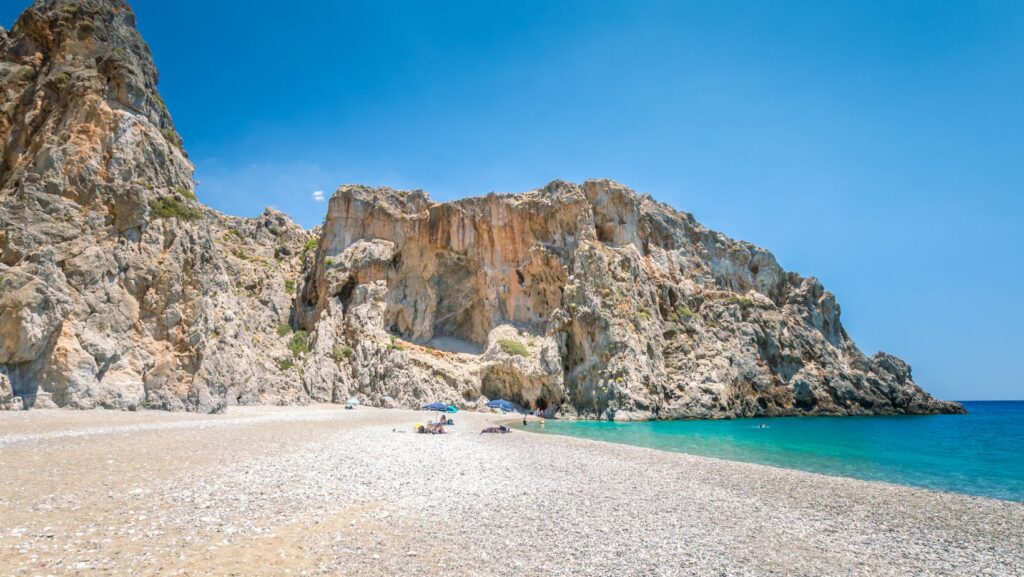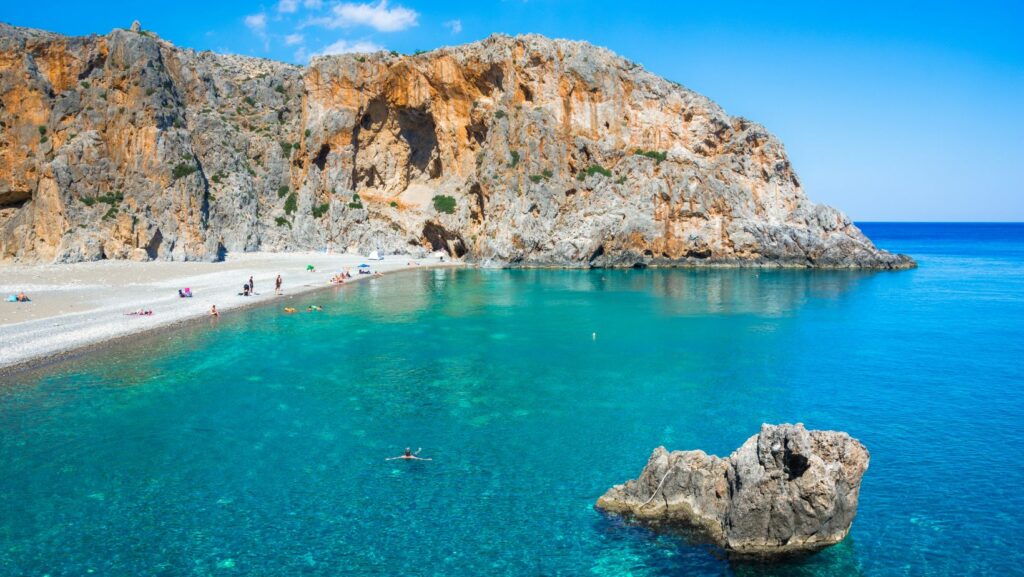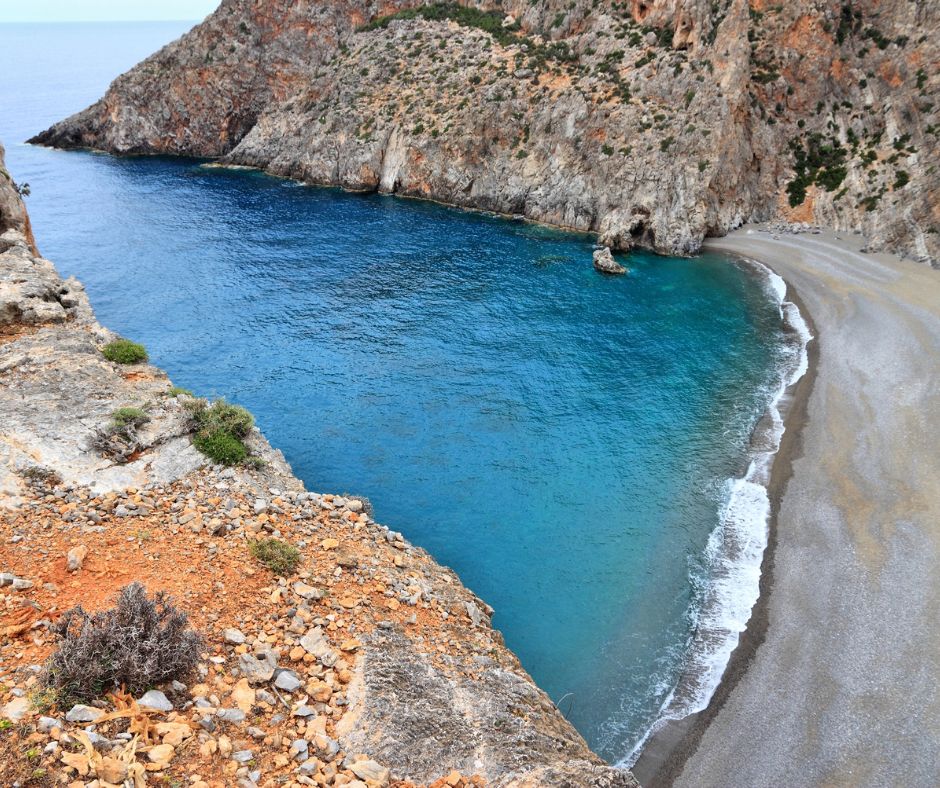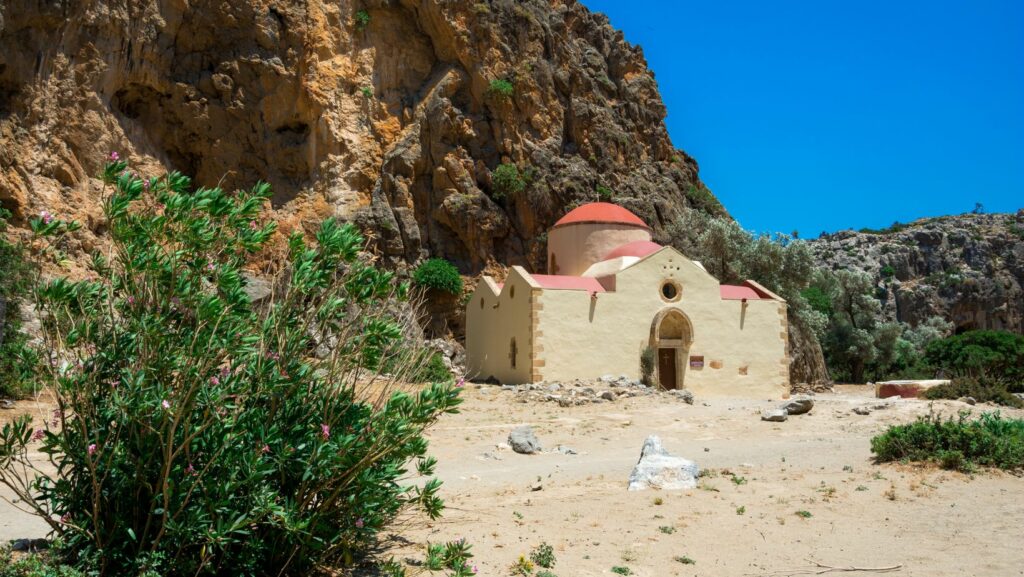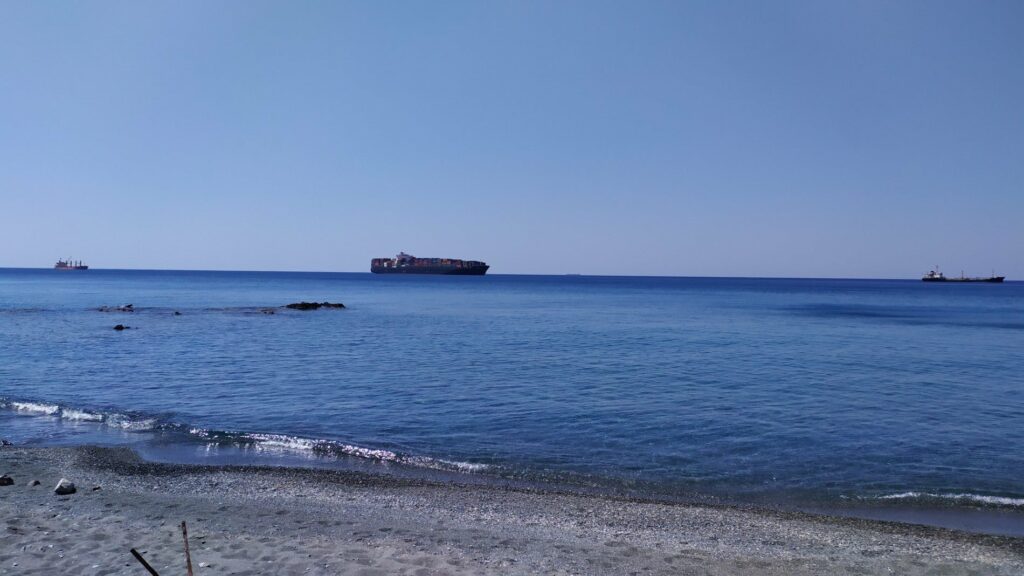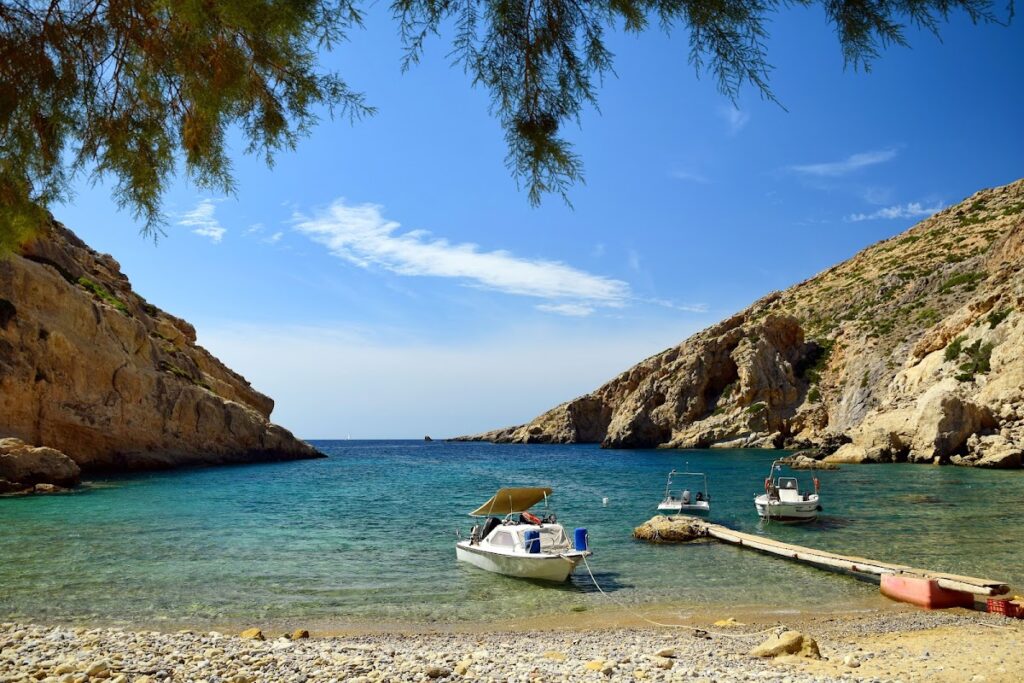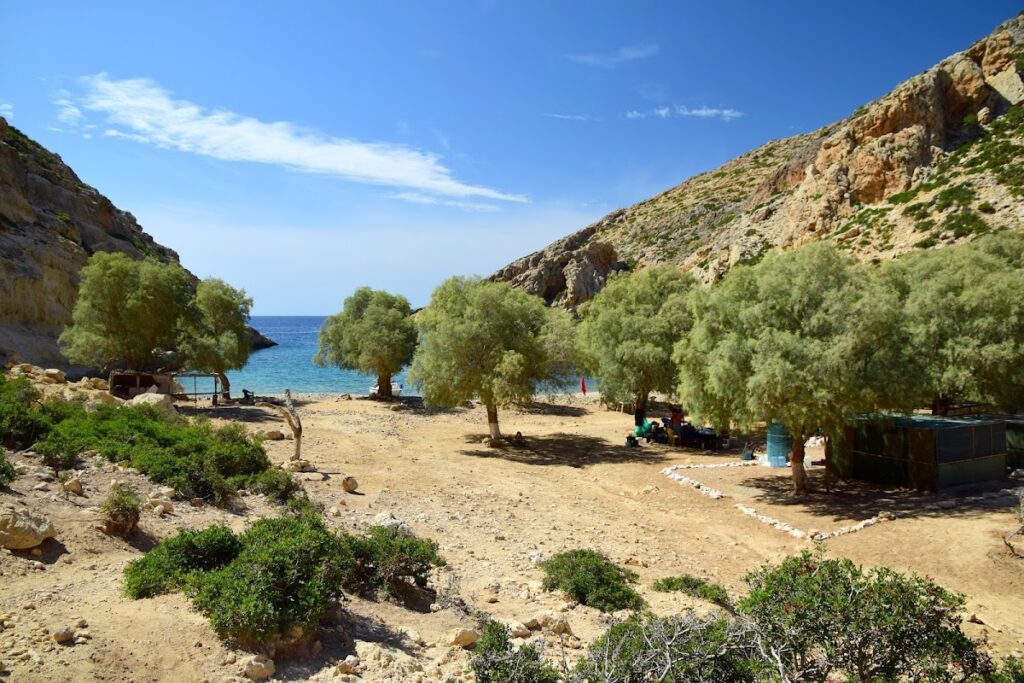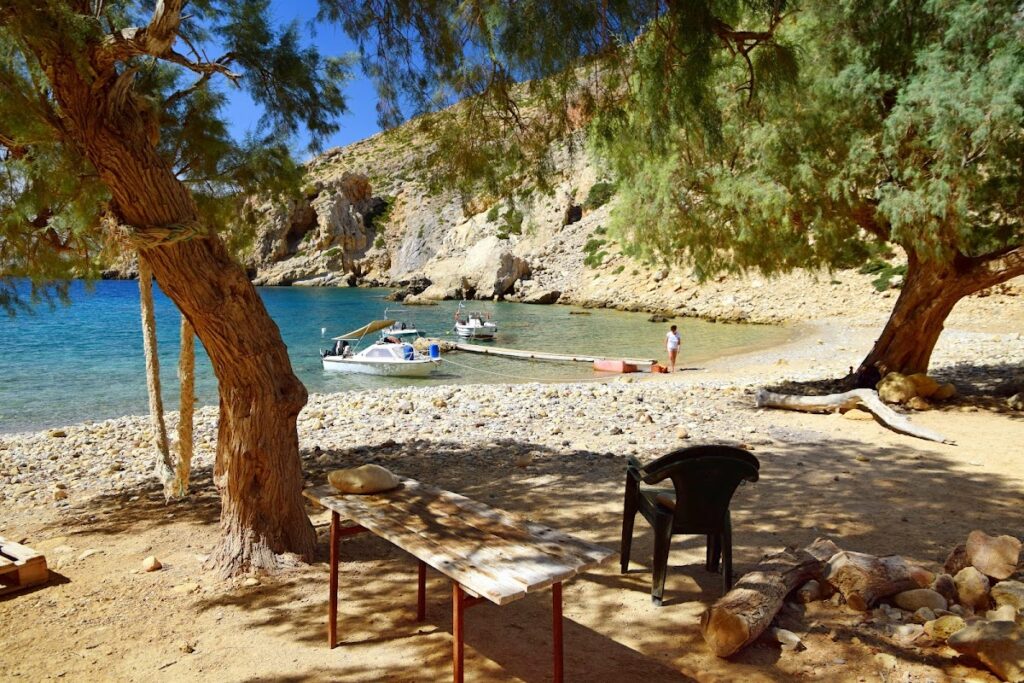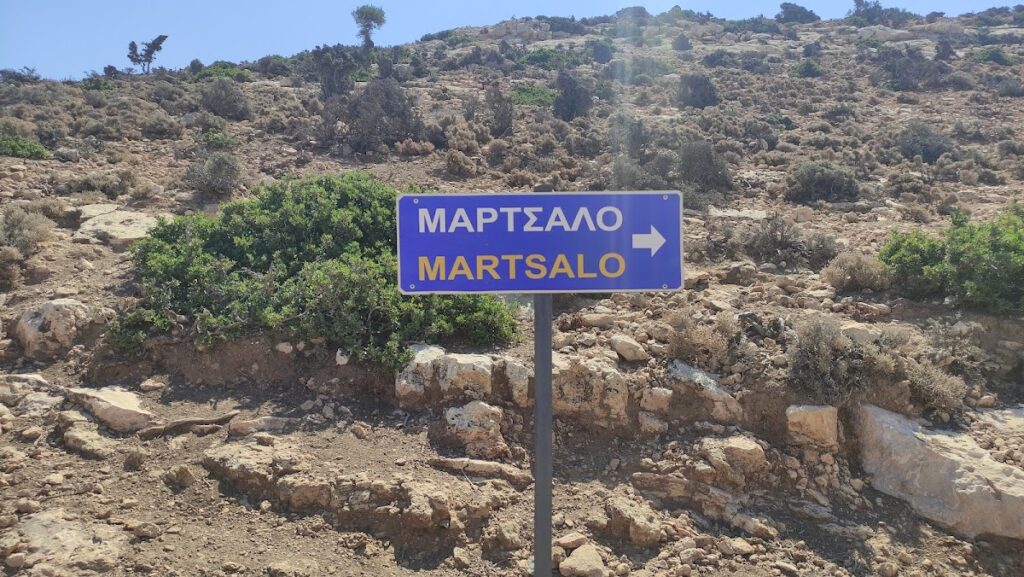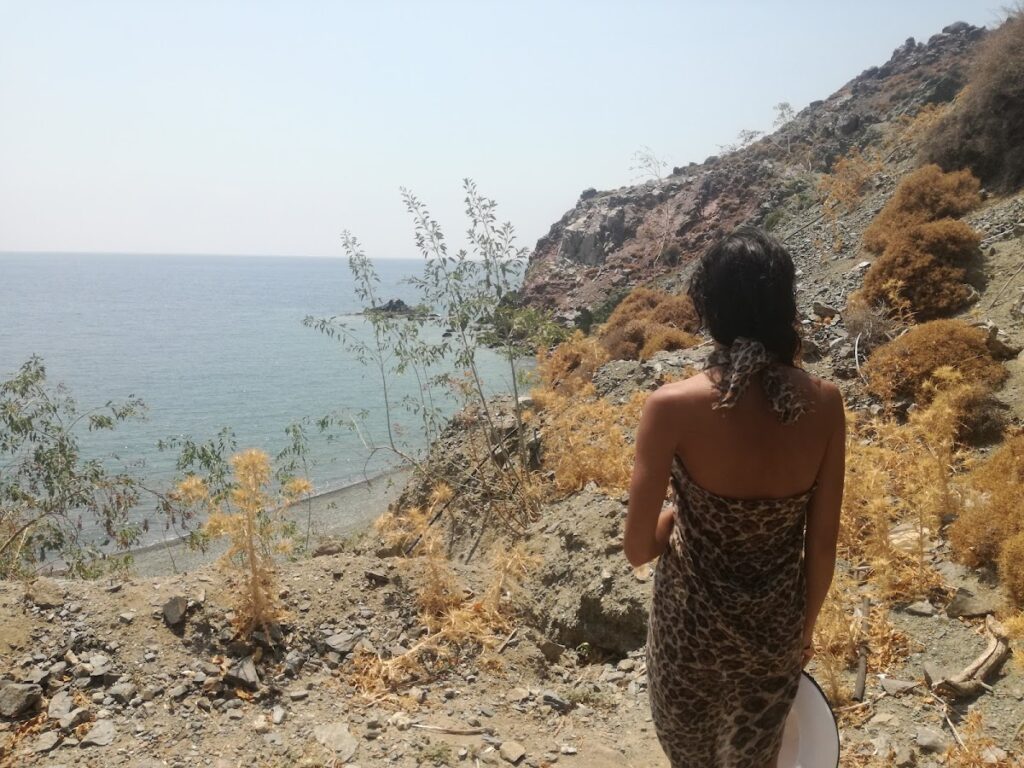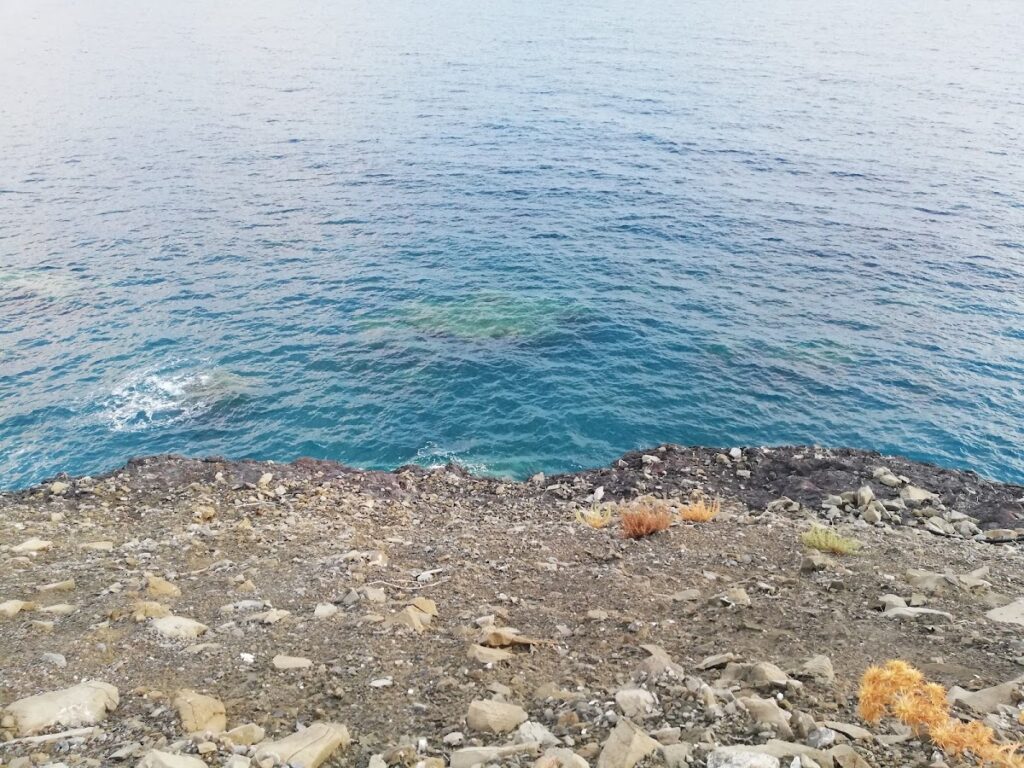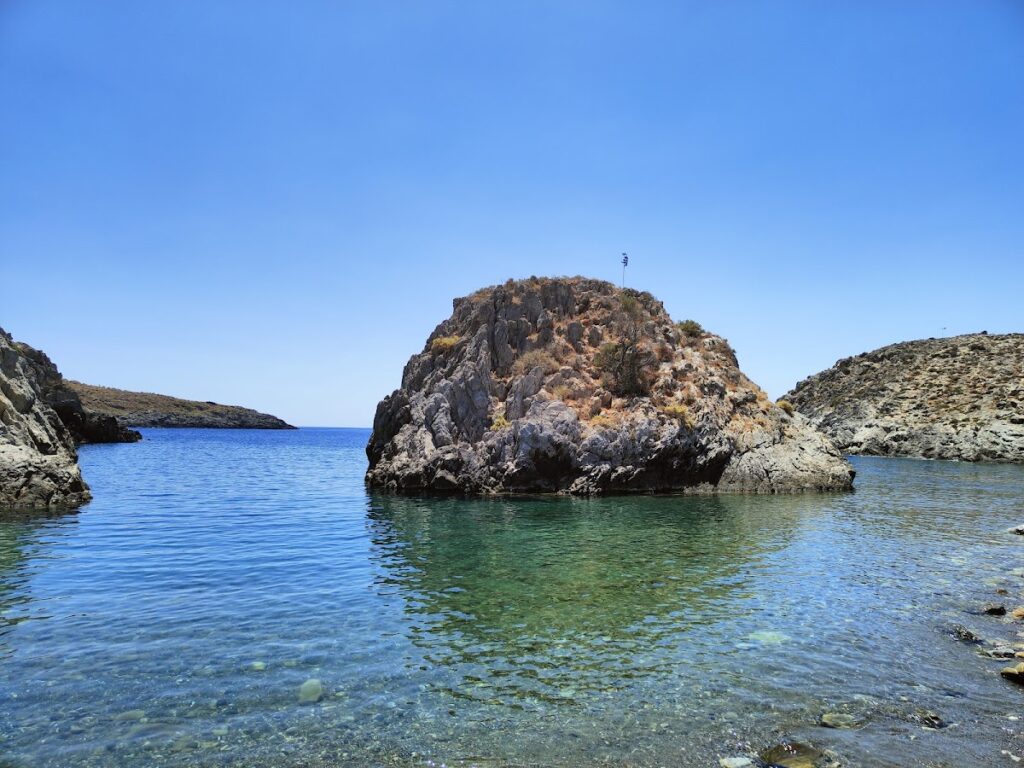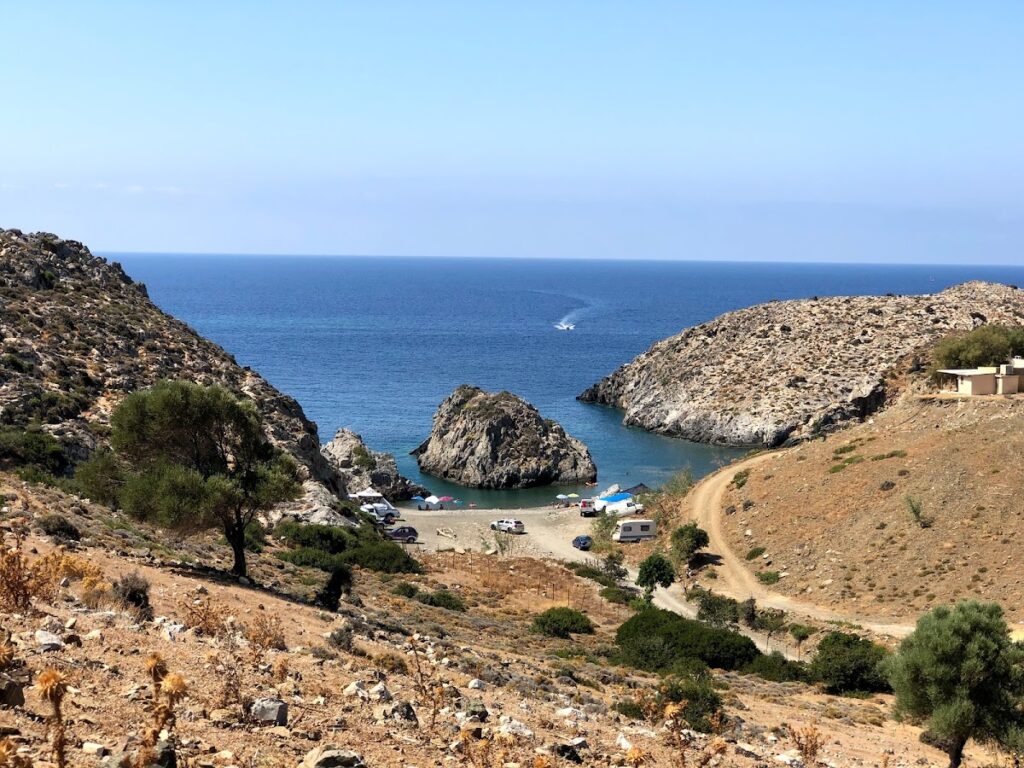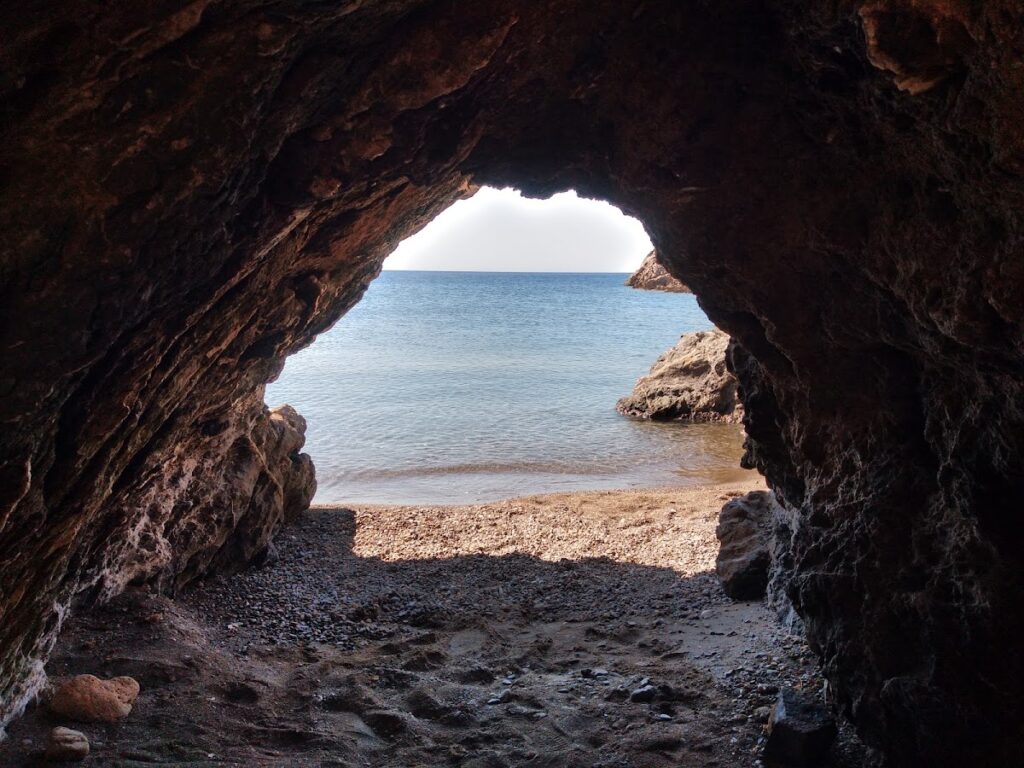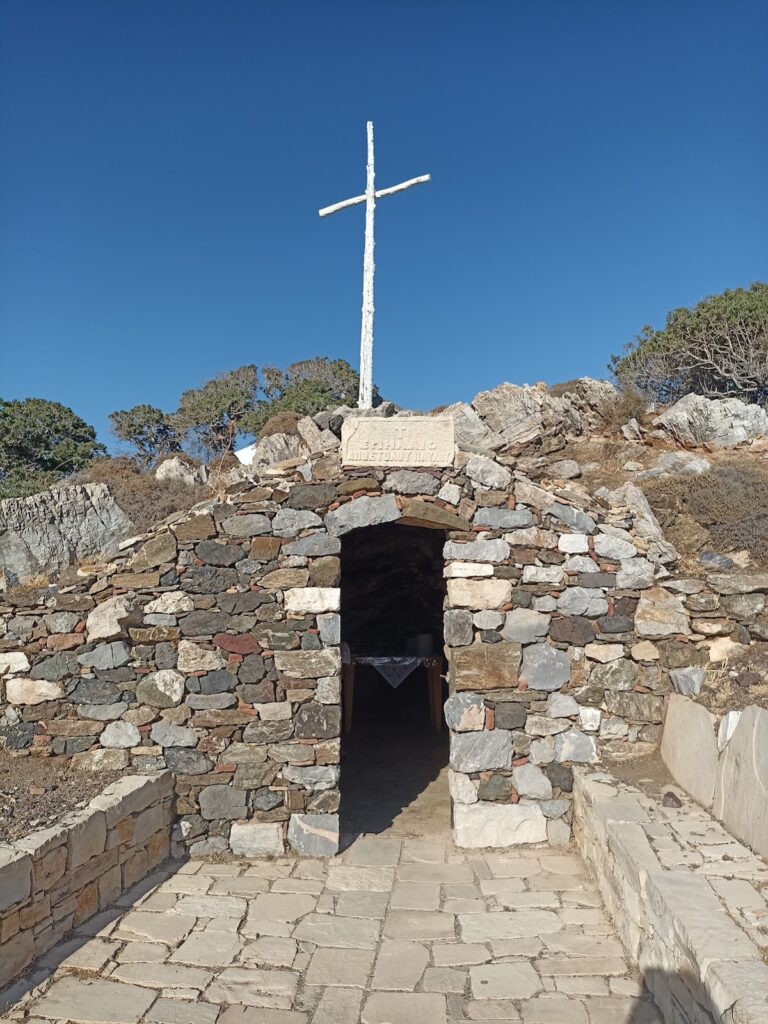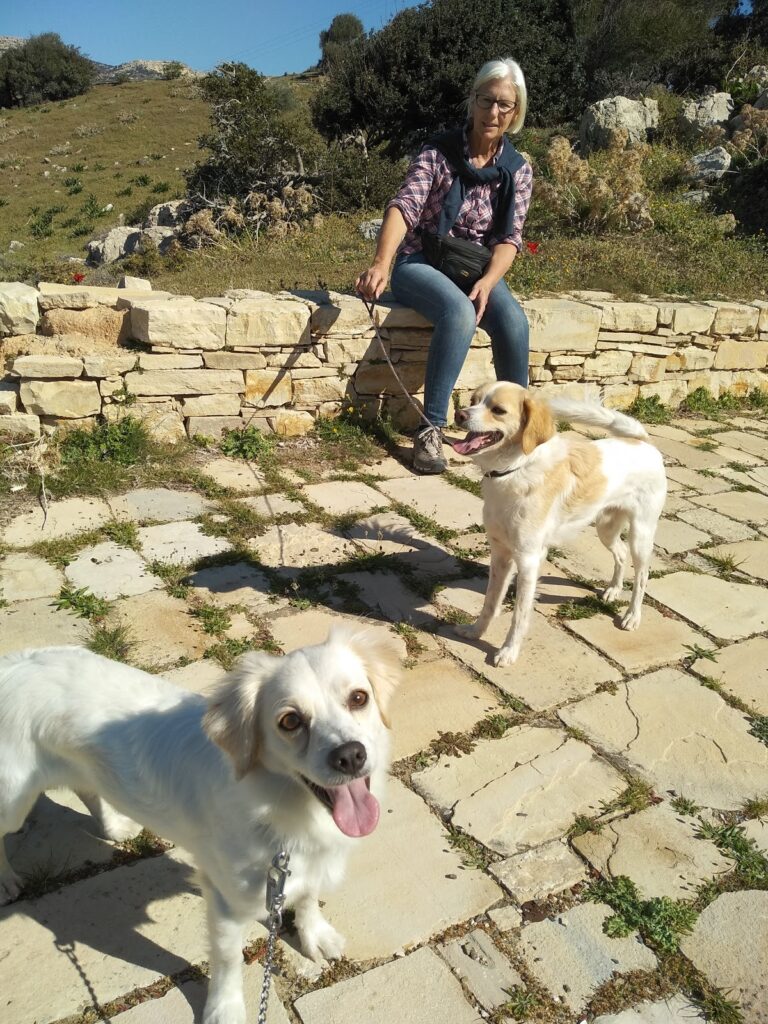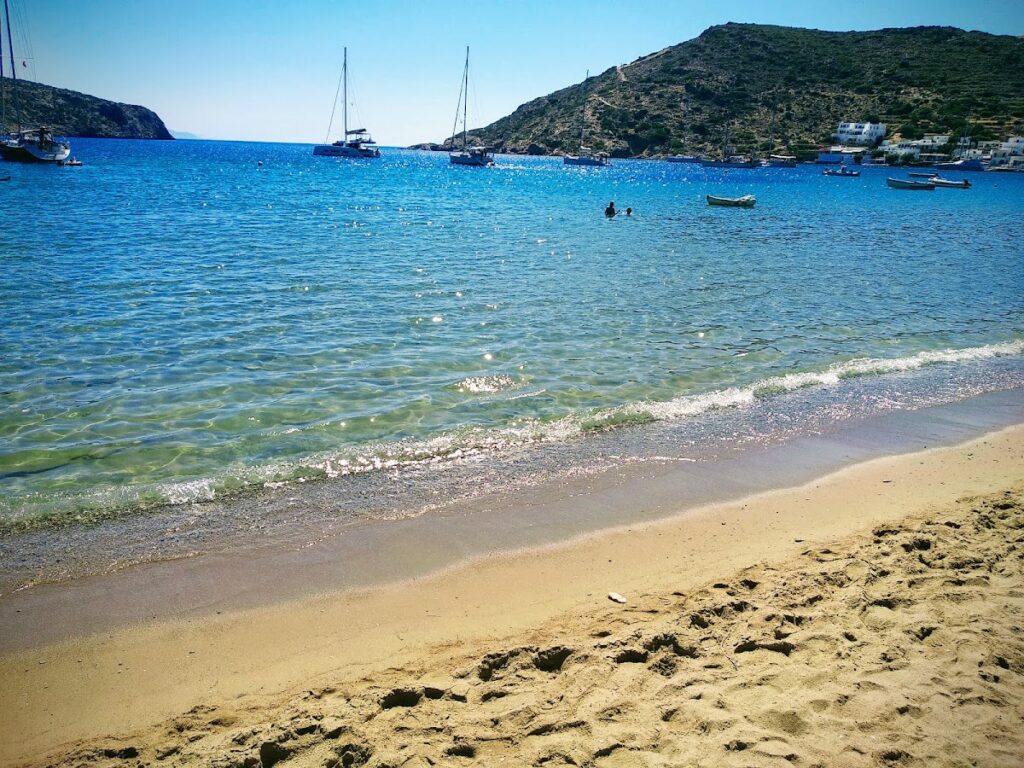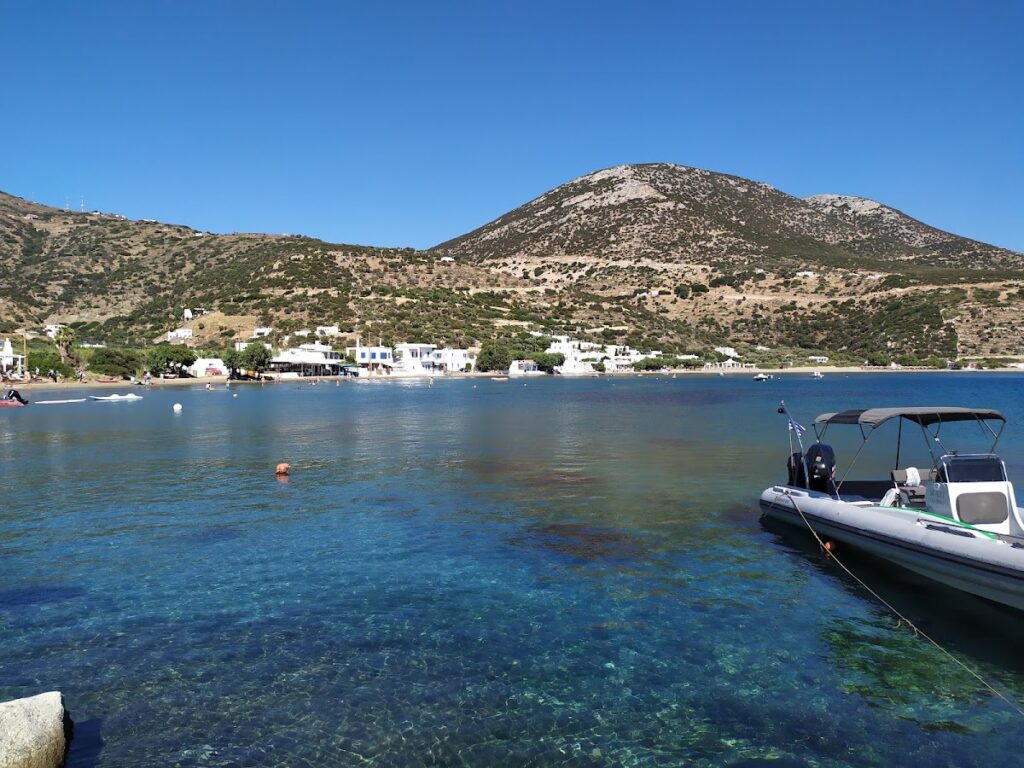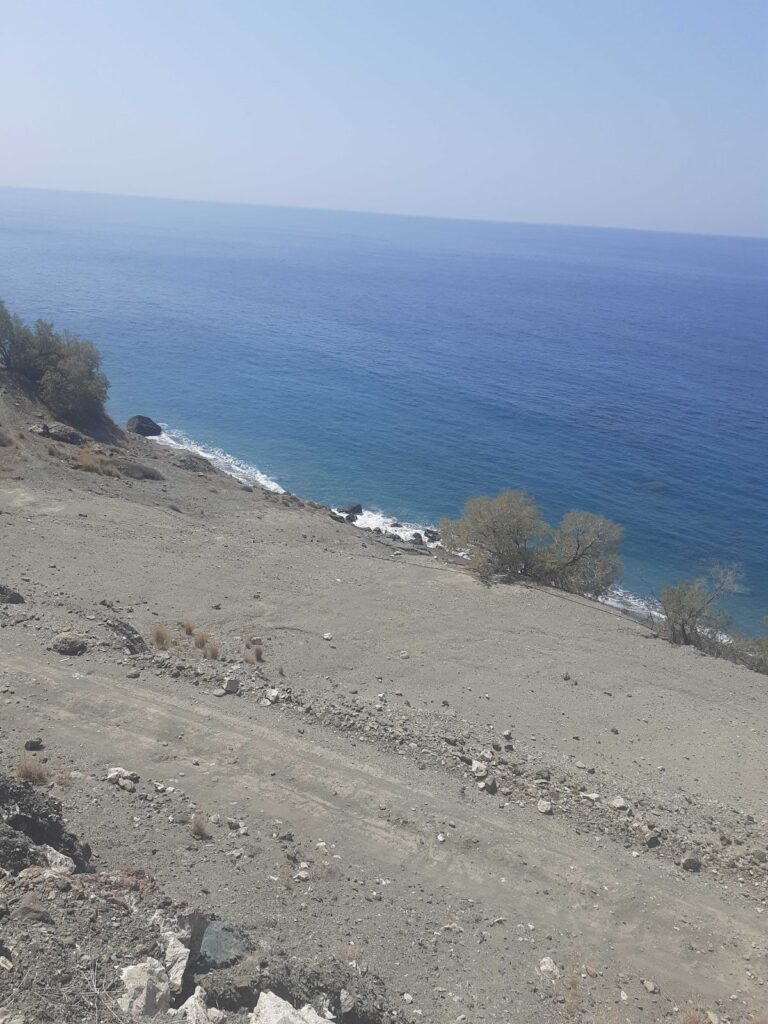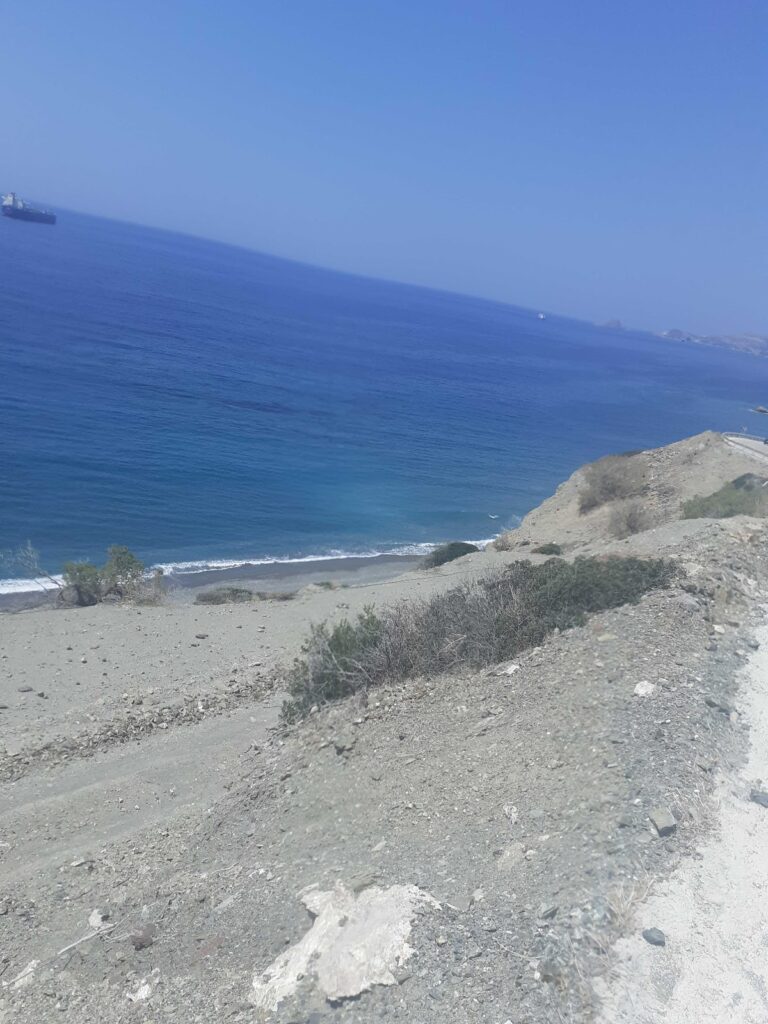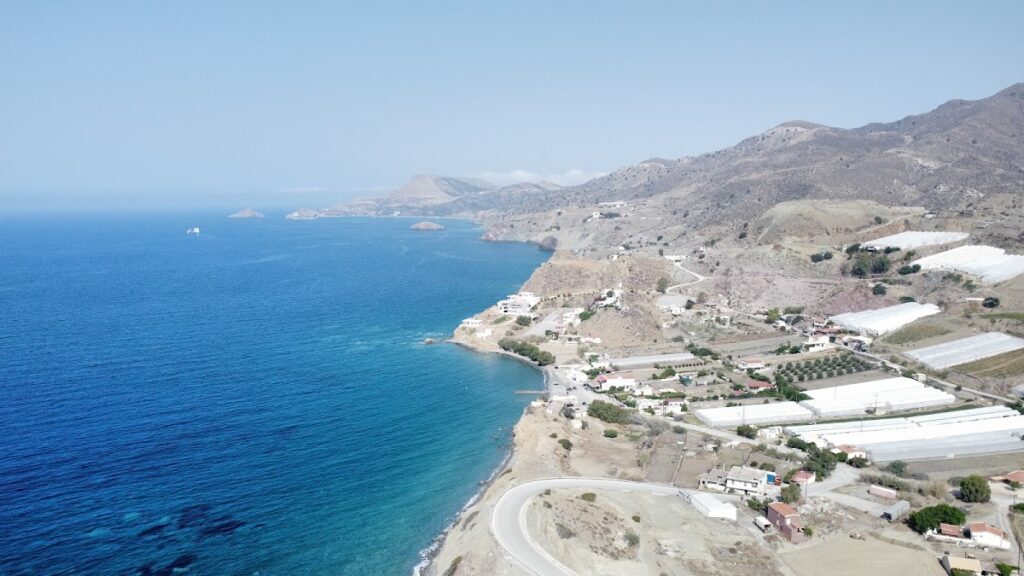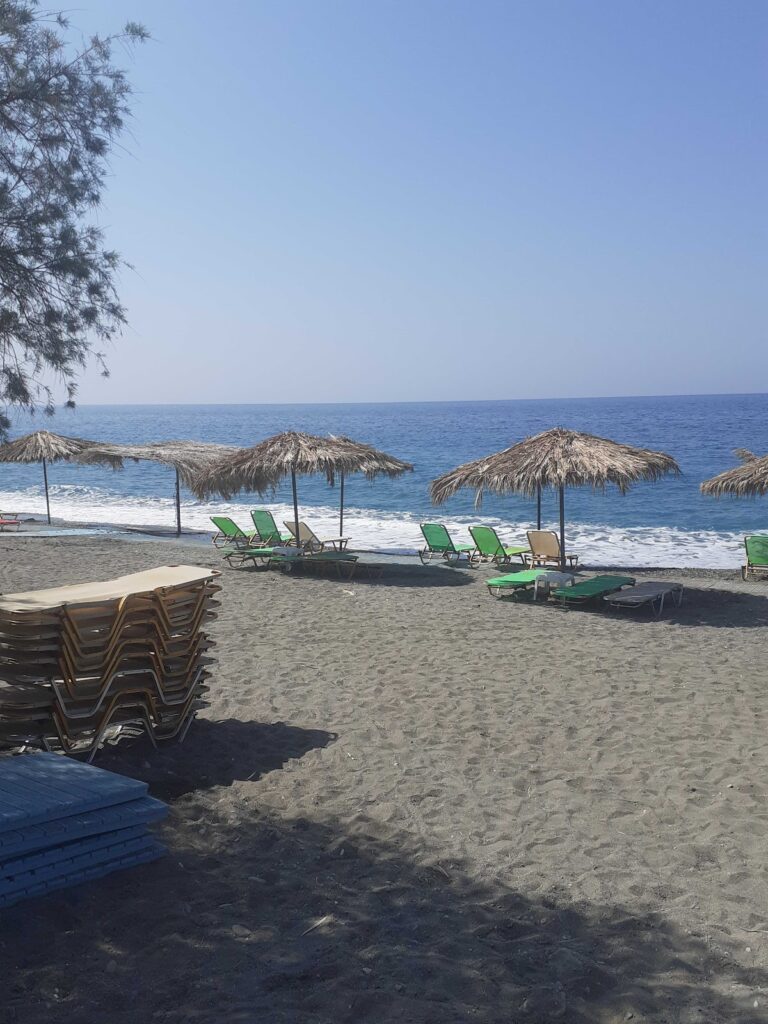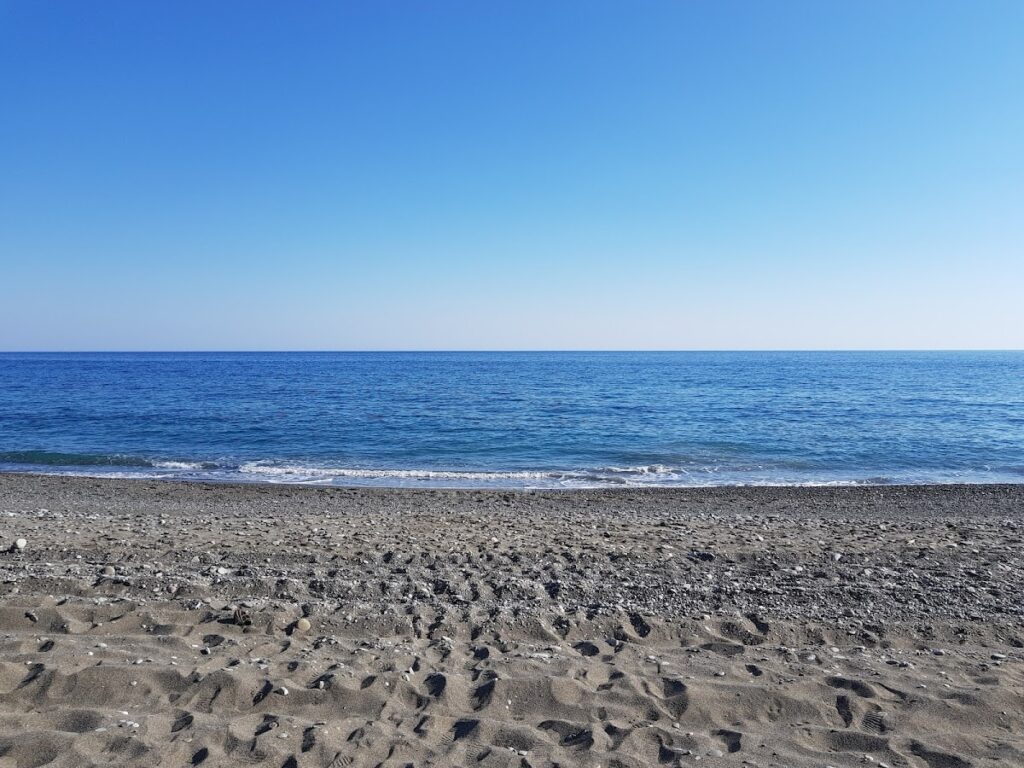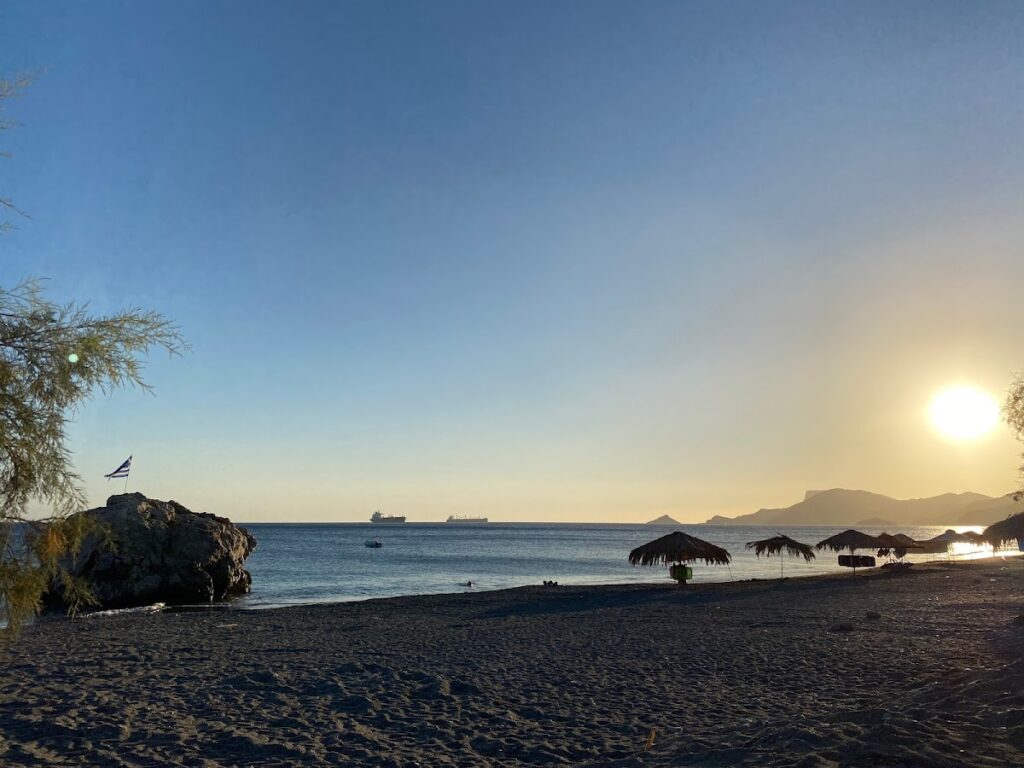Beaches near Kaloí Liménes, in Heraklion region
Here is list of closest beaches to Kaloí Liménes
- 590 m
- Kali Limenes beach
- Fine Pebbles, Sand
- Normal
- Blue
Kali Limenes, also known as Good Ports, is a seaside village in the Asterousia Mountains, situated 75km southwest of Heraklion. It’s one of the few coastal regions of Asterousia accessible via asphalt road. Reaching this place requires a drive from Pompia village, through Messara Plane, and onto Pigaidakia village. Despite the road being narrow and loaded with sharp turns, the journey is worthwhile. An alternative dirt road from the Monastery of Odigitria, also leading to Kali Limenes, can be paired with a beach visit to Agiofarago.
Upon arrival, you can’t miss the oil tanks of SEKA stationed on the island Mikronisi, locally known as “Apostle Paul”. Kali Limenes is a lesser-known spot for Greeks, but the Vardinoyannis family, one of Europe’s wealthiest, is well-known. They began their empire in 1961 with these tanks, serving as a refuelling station for ships crossing the Mediterranean and the Suez Canal. Despite the visual pollution these facilities bring, the sea remains pristine.
Ignoring the unsightly tanks, the stunning beaches of Kali Limenes will undoubtedly captivate you. Suitable for year-round swimming, the sea, true to its name Fair Harbors, remains calm most of the year, except in winter. The calmness was a factor in the placement of the tanks. Weekends bring crowds to these beaches, undeterred by the challenging journey through Asterousia.
Maria Ammos, or Long Sandy Beach, is the first beach you’ll encounter coming from Pigaidakia. It’s a lengthy beach with greyish pebbles and deep waters. As you move east, the coast grows increasingly tranquil. Maria Ammos is a popular spot for nudists, and campers are drawn to the shade-providing tamarisk trees lining the coast. The beach may not be well-organized, but you’ll find a few eateries and hotels to the west.
Kali Limenes village, west of Makria Ammos, is nestled amidst lush olive groves. A quaint bay and harbour grace the village’s front, along with the child-friendly Psili Ammos, or Fine Sandy Beach. This beach, the busiest in the area, is lined with restaurants, a mini market, and rented rooms.
The hill west of Kali Limenes houses the chapel of St. Paul. It was built in 1700 in honor of the Ecumenical Patriarch Bartholomew’s visit in 1992 and 2008. You can also explore a nearby cave, believed to have housed Apostle Paul for two years. The gorgeous beach of Stena is also worth a visit.
East of Kali Limenes, a road leading to Chrysostomos will bring you to Karavovrysi beach after a 2km journey and a short walk. It’s a stunning beach with coarse sand and calm water. But be ready to bring your own shade as there are no trees.
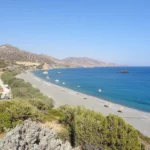
- 630 m
- Stena beach
- Fine Pebbles, Rocks in places
- Normal
- Blue
Stena, a secluded bay 75km southwest of Heraklion and just 500m west of Kali Limenes, is nestled beneath the church and cave of St. Paul. According to scripture, the Apostle Paul resided in this cave during his journey to Rome. Reachable by a 400m downhill dirt road from Kali Limenes, Stena is an undiscovered gem not found in typical Crete tourist guides.
Its unique feature, a massive rock situated in the center of the cove, separates it from regular beaches. This rock is surrounded by a narrow water strip, contributing to the name Stena, which means ‘Strait’ – a nod to the narrow passage between the rock and the coast. Along this water strip, a beautiful beach with fine pebbles forms.
Though unknown to many and completely unorganized, its small size makes it seem packed with just a handful of people. If you are visiting Kali Limenes, Stena can be a great choice, especially during less crowded times (like weekdays). With Kali Limenes in close proximity, you need not worry about food, water, or accommodation. Don’t forget your mask if you visit, the rocks are perfect for exploring!

- 2.3 km
- Agiofarago beach
- Fine Pebbles
- Deep
- Deep blue
Agiofarago Beach, is a picturesque beach situated about 80km south of Heraklion city. To get there, you can opt for a 25-50 minute scenic trek through the Agiofarago Gorge or a boat ride from Matala, Agia Galini, Kokkinos Pirgos, or Kali Limenes. If you decide to trek through the gorge, you’ll enjoy a beautiful journey surrounded by towering walls. On your way, you will pass large caves inhabited by hermits from the nearby Odigitria Monastery and the charming St. Anthony’s chapel with its small brackish water well.
The end of the gorge route will bring you to the stunning Agiofarago Beach, where clear blue waters and fine pebbles are framed by towering cliffs. A unique rock formation to the west creates an enchanting swimming spot. However, it’s worth noting that due to the area’s religious significance in Crete, naturism is discouraged.
For those seeking an adventure in the afternoon, sturdy footwear is recommended to climb the eastern cliffs for an awe-inspiring view. A short walk to the southeast will reveal Vourvoulitis, a hidden saltwater lake surrounded by steep cliffs, linked to the sea via an underwater passage. Be careful, as the descent to the lake can be perilous.
To reach Agiofarago Beach from Heraklion, drive towards Sivas village and then to the Odigitria Monastery. From Odigitria, follow the dirt road leading to St. Anthony’s Church. After about 4km, turn right at the Agiofarago sign and continue until you reach a small plateau that serves as a parking area. However, avoid parking under trees to prevent goats from damaging your car while they’re trying to eat the tree leaves. A 30-minute walk through the gorge will then lead you to the stunning beach. Along the way, you’ll pass St. Anthony’s small church and Goumenospilios cave. For those arriving by boat, the rocky islet of Papadoplaka, located opposite Agiofarago and known for its small sea salt ponds harvested by locals, is worth a visit.
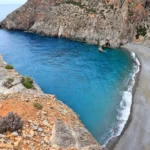
- 2.3 km
- Lassea beach
- Fine Pebbles, Sand
- Normal
- Blue
Chrysostomos, a quaint seaside hamlet, is situated 75km to the south of Heraklion and 3km to the east of Kali Limenes. This small community features a few local taverns, a mini market, and available lodging. It takes its name from the decaying church of Saint John Chrysostomos located on the eastern side of the settlement. Chrysostomos is established on the ancient city of Lassea’s site, which Saint Paul visited during his time on Crete. Lassea served as a port for the Roman city Gortys, the then capital of Crete and Libya in the Roman era, and was rich in copper resources.
Lassea’s beach, in front of the village, is a picturesque spot featuring coarse sand and shelter from westerly winds. It’s not commercialized, but is conveniently close to the village. On the beach’s western edge, a rocky outcrop extends towards the small islet of Trafos, marking the ancient port of Lassea’s old pier. These rocks have been there since the 1960s, when they were used to construct the Oil Tanks of Kali Limenes. The ancient town of Lasea’s remnants are still visible on the beach and the islet. The beach extends beyond Trafos to the west, forming a separate beach known as Segrezo Ryaki that faces westward. This beach is proximate to a Roman cemetery and is secluded, ideal for nudists, but has more rocks than the main beach. At the westernmost point, there’s a freshwater spring.
To get here from Kali Limenes, take the paved road that begins 1km east of Kali Limenes and head east towards Platia Peramata. After about 2km, you will encounter the village of Chrysostomos on your right.
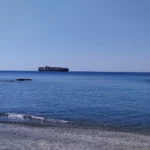
- 2.9 km
- Martsalo beach
- Pebbles
- Normal
- Deep blue
Martsalo, a secluded beach located in the western Asterousia Range, is just a few kilometres from Cape Lithino, the “horn” of Messara Plain, and 80km southwest of Heraklion. To reach this isolated spot, follow the dirt road from Odigitria Monastery to Lithino Cape, bearing right after the monastery. After travelling some distance, a sign indicating Martsalo will appear. Following this rough track will lead you to the entrance of Martsalo Gorge.
Parking your car at the gorge’s entrance, continue on foot for roughly 2km to the south. The hike through the gorge is not particularly challenging. The gorge, along with others in the area (like Agiofarago), has served as a hermitage for the Odigitria monastery, giving it significant religious importance. Remnants of the cells where monks once lived can still be observed in the gorge.
At the start of your journey, you’ll discover the beautiful church of Panagia Martsaliani, dedicated to the Annunciation. This church, constructed within a cave, served as a catacomb during the Christian persecutions. Centuries later, it was rediscovered by a shepherd. An icon of the Annunciation uncovered at that time is now preserved in the Odigitria Monastery. On August 15, when the Church celebrates, numerous visitors travel from the Mesara Plain to Martsalo.
As you continue down the gorge, you’ll pass between the indigenous Phoenix Theophrasti palm trees. Martsalo is home to one of the largest colonies of this species in Crete, and the largest in the Heraklion prefecture. In the gorge’s center, a stone container collects water from a nearby spring, and around it, the hermits cultivate their necessities.
A 15-20 minute walk through the palm trees will lead you to the beach at the mouth of Martsalo. This isolated beach with its large pebbles and calm waters (Martsalo translates to Good Harbor in Latin) is an ideal spot for solitude. A simple pier serves boats coming from Kali Limenes or Matala, and surrounding tamarisk trees provide natural shade. As a religious site, it’s important to respect the hermits and refrain from activities such as nudism.
Traces of a harbour hamlet from 1800-1600BC suggest the beach has served as a port since the Minoan period. The Apostle Paul also reportedly stopped at Martsalo to preach Christianity during his journey to Rome.
Cape Lithino, the southernmost point of Crete and the “corner” of Messara plain, is home to the dry Kefali peak. From here, cliffs plunge 391m into the sea. The view is breathtaking. To reach Kefali, follow the 13km long rough dirt road starting from Odigitria Monastery and heading west. On Kefali, you’ll find the ruins of a German military establishment from World War 2 and a small stone church dedicated to the Holy Cross.
Locals may tell you there are no beaches between Martsalo and Vathi, but this isn’t true. Below Kefali is a small cape called Platys Poros or Trahili, home to two bays with deep blue water and coarse pebbles, known as “Maragou Limani” or “Carpenter’s Harbor”. These southernmost beaches of Crete are only accessible by boat, and the surrounding coast is riddled with caves worth exploring.
Just west of Martsalo beach and 600m east of Poros is the small beach of Kounenos, accessible via a footpath near Martsalo. The surrounding landscape, filled with caves, cliffs, and unique rock formations, makes this an ideal spot for nature lovers. The beach features small pebbles and deep waters.

- 3.2 km
- Maha beach
- Fine Pebbles
- Deep
- Deep blue
Just about 1km eastward from the Chrysostomos settlement, you’ll come across the stunning Maha beaches. The first beach, primarily used as a harbour, is rocky and unorganized. However, there are a few rooms and a tavern in close proximity, with a road that leads right to the beach. If you continue to follow the dirt pathway that runs parallel to the beach towards the east, you’ll discover another breathtaking beach after about 100m. This beach boasts fine pebbles and deep, crystal blue waters. Although there are no trees to offer shade, there’s a cave on the eastern side of the beach that provides some respite from the sun. Do note that camping is prohibited here, as indicated by the signs scattered around the area.
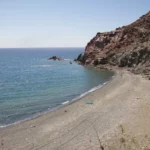
- 4.1 km
- Krigi beach
- Fine Pebbles
- Normal
- Blue
To the west of the village of Platia Peramata, you’ll discover the humble settlement known as Krigioi, with its array of unlawfully constructed homes and cottages. A brief drive along the local stream leads you to a stunning beach adorned with fine pebbles and crystal clear water. The uniqueness of Krigi lies in its numerous miniature beaches that stretch along the coast to Platia Peramata and the awe-inspiring soft limestone formations.
Overlooking Krigi is the quaint chapel of Saint Demetrius. To its west, you will find another secluded pebbly beach, Aspros Harakas, or White Rock, named for the pale rocks at its western end. However, Aspros Harakas may not appeal to everyone as it can only be reached by boat, boasts large stones and lacks shade.
Venturing further westward, you’ll stumble upon the three consecutive beaches of Kokkines Plakes, or Red Rocks. True to their name, these beaches are surrounded by reddish rocks and are primarily accessible via the sea.

- 4.8 km
- Vathy beach
- Rocks in places, Sand
- Normal
- Blue, Green
Vathi, a breathtaking beach, lies 79km and 17km southwest of Heraklion and the Sivas village respectively. It’s located near Crete’s southernmost point, Cape Lithino, and well away from bustling cities, making it a perfect spot for those longing for ultimate serenity. The beach is nestled at the mouth of a petite gorge and enclosed by extensive cliffs. Its circular cove shields it from the open sea, rendering Vathi a natural sanctuary, with legends claiming it served as a pirate anchorage. The beach, well-protected, typically boasts calm waters, despite surrounding beaches often witnessing waves. Only southwest winds trigger storms in this region.
The gorge walls in the area are adorned with fascinating natural cavities, resulting from wind and salt erosion of the white limestone. The vicinity hosts a few makeshift huts, old campervans, and basic homes constructed by locals, primarily from the Gergeri village. These locals’ ancestors would bring their flocks to this warm location in the winter, and their descendants now enjoy their summers here.
The beach is predominantly sandy with sporadic stones. The shallow waters are bordered by numerous tamarisk trees providing shade. Nudity is prohibited here, respecting the area’s religious heritage (linked to the Odigitria Monastery).
To reach Vathi by car, drive along the paved road from Sivas village towards the Odigitria Monastery. From the monastery, take the first dirt track on your right, heading west towards Kefali Peak and up the untamed Cape Lithino. Continue for about 15km on the rough gravel road, following the signs to Vathi. Alternatively, if you’re without a car or prefer not to drive, consider hopping on an excursion boat to Vathi from Matala, Kokkinos Pirgos, or Agia Galini.
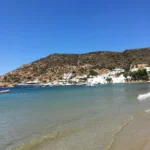
- 4.9 km
- Platia Peramata beach
- Fine Pebbles, Pebbles
- Shallow
- Blue
Platia Peramata, a quaint village situated 69km south of Heraklion and 7km east of both Kali Limenes and Lendas, nestles at the exit of a small, fertile valley that cuts through the rugged Asterousia Mountains. This valley begins at Antiskari village and concludes in a settlement, its rich soil used for growing early vegetables like tomatoes, cucumbers, and peppers in greenhouses due to the consistently high temperatures.
The region features numerous adjacent bays that form serene and picturesque beaches, frequented primarily by locals. At the heart of the settlement lies the small beach of Platia Peramata, known for its fine pebbles which are predominantly used to moor the locals’ boats. Despite the beach’s lack of extensive facilities, a handful of tavernas and rooms are available nearby. Tamarisk trees line the beach and are often used as camping spots. To the east of the settlement, East Platia Peramata beach, less favored by swimmers, offers another pebbly shoreline.

- 5.4 km
- Psili Ammos beach - Heraklion
- Fine Pebbles, Sand
- Normal
- Blue
The longest beach in the region, Psili Ammos, is situated to the east of the village Platia Peramata. This secluded and stunning beach does not cater well to camping due to the lack of tree shade. Still, at the eastern extremity, one can find large white rocks known as Asproharaki, which provide shade to those fortunate enough to claim them. The beach was thrust into prominence in 2010 when a significant Russian oil tanker was stranded there during a storm. Thankfully, no one was at risk and no environmental harm was done.
Paliomandra beach
On your way to Psili Ammos from Tsigounas, you will encounter several minor beaches. The furthest east cove, reachable via a dirt road, is known as Paliomandra and is rather secluded. The beach features coarse sand and a rocky seabed, making it ideal for fishing and snorkeling.
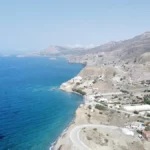
No results available
Reset









